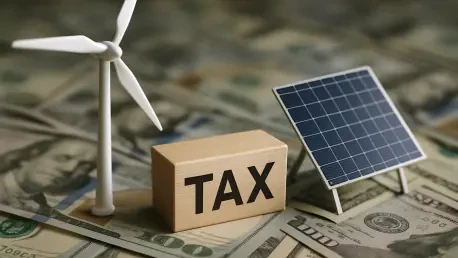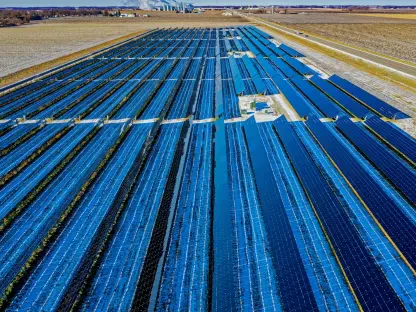The renewable energy sector is experiencing significant changes following the recent enactment of the Republican budget megabill by President Donald Trump. This legislation, reshaping provisions under the Inflation Reduction Act (IRA), focuses primarily on the alteration of wind and solar tax credits. The new tax credit structure is prompting utilities to fast-track their renewable energy projects, setting a stage for rapid transformation within the industry. This analysis delves into how these developments could impact energy markets, project timelines, and investment strategies.
Context and Purpose
In the face of legislative shifts, utilities are pressed to recalibrate their approaches to renewable energy deployment. The newly implemented one-year safe harbor period presents a momentous opportunity and challenge for utility companies. This shift aims to not only meet legislative requirements but also capitalize on available tax incentives. Understanding the dynamic context of this policy change is crucial for stakeholders across the industry, as it challenges established strategies and requires decisive action in a newly competitive landscape.
Detailed Market Analysis and Trends
The energy market is currently experiencing a pivot, driven by the urgent need to align with new regulatory frameworks and capture the advantages of modified tax credits. The one-year safe harbor initiative, which stipulates that wind and solar projects commence swiftly to remain eligible for tax incentives, necessitates a dramatic shift in project scheduling and funding. Companies like Xcel Energy, WEC Energy Group, CMS Energy, and Ameren are distinctly impacted, as their reliance on renewable energy becomes a focal point for meeting these accelerated timeframes. Furthermore, this shift is expected to trigger an increase in equipment orders as utilities rush to meet expenditure benchmarks.
The complexity of this shift is compounded by regional regulatory variances influencing how utilities react to these federal changes. The regional differences present both obstacles and benefits, depending on the existing energy and regulatory landscape in each area. States with conducive policies and supportive infrastructures are anticipated to adapt more smoothly, encouraging innovations that further streamline compliance processes across different jurisdictions.
Additionally, the requirement for projects to break ground within a specified period or face ineligibility by 2027 intensifies this urgency. President Trump’s executive order mandates the Treasury to issue guidance on these measures, reinforcing the compliance scrutiny for qualifying projects. Although industry insiders express apprehension over the sufficiency of existing guidelines, the move underlines the government’s commitment to ensuring that claimed construction starts are legitimate. This creates a dynamic relationship between utilities, regulators, and legislators as companies strategize to align their timelines and funding.
Evaluating Key Implications and Strategic Considerations
In light of these developments, utility companies are urged to foster adaptability in their strategies, focusing on the rapid execution of projects while ensuring economic viability. Essential considerations include adopting flexible planning processes to accommodate unforeseen changes in regulatory guidance and market demands. Strategic partnerships with technology providers and regulatory bodies can facilitate smoother transitions and help utilities align project execution with policy expectations. Investing in innovative technologies for energy capture and storage becomes vital, providing a competitive edge in meeting consumer demands for affordable clean energy.
While aiming to navigate the intricacies of the new tax credit system, investors and stakeholders must remain cautious yet optimistic. The evolving landscape calls for a delicate balance between risk management and seizing growth opportunities created by these legislative changes.
Reflecting on Market Trajectories and Forward-Looking Insights
The introduction of the Republican budget megabill brought both opportunities and challenges to the renewable energy sector, demanding aggressive adaptation from utility companies. As the industry adjusted to the new wind and solar tax credit structures, stakeholders learned the importance of strategic foresight in navigating evolving legislation. Proactively addressing project timelines and fostering collaborative efforts with technology partners and regulatory bodies proved instrumental in effective adaptation. Forward momentum was sustained as energy companies concentrated on integrating innovative solutions and sustainable growth strategies, ensuring resilience amid an ever-changing political landscape.









